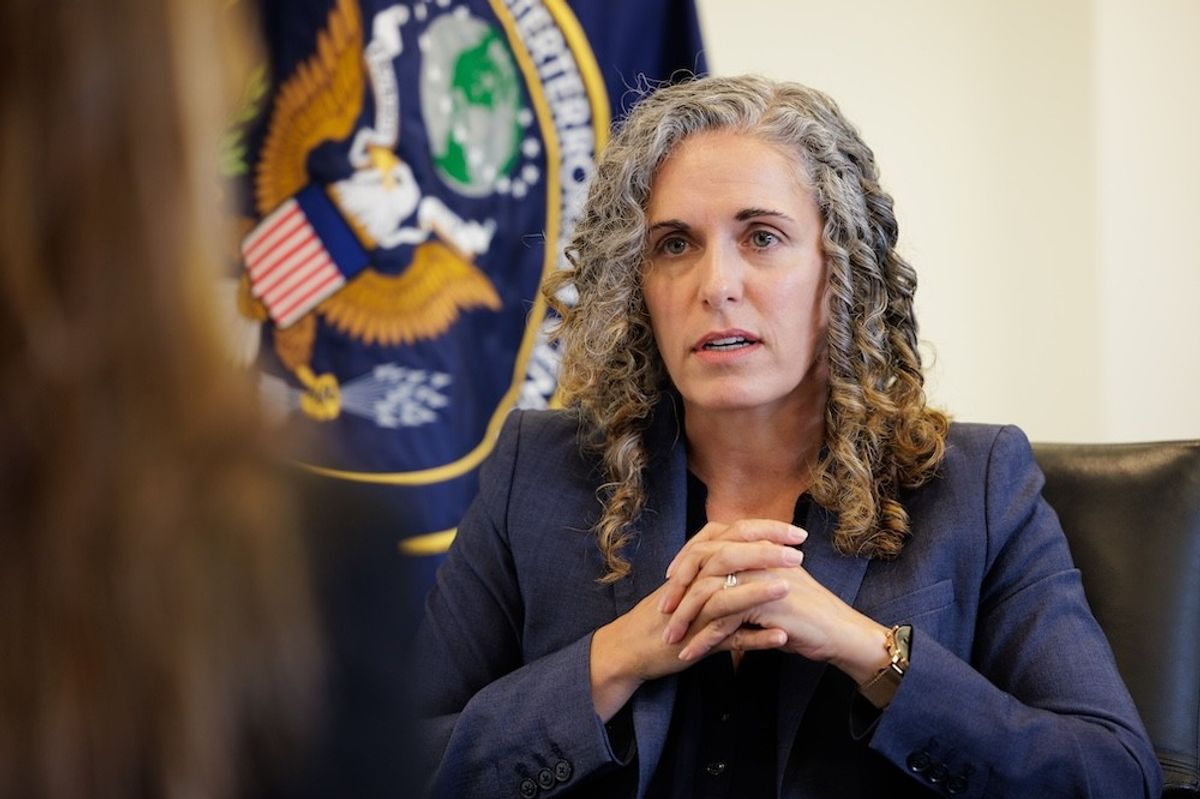The removal of top terrorist leaders from the battlefield continues to be a critical element of the United States’ counterterrorism strategy. In the years since 9/11, the U.S has managed to keep pressure on several key terrorist groups, such as al Qaeda and ISIS, by targeting their senior leadership and damaging their operational capacities. The Cipher Brief sat down with Mike Leiter, Cipher Brief expert and former Director of the National Counterterrorism Center, to discuss the importance of leadership decapitation as part of the United States’ counterterrorism strategy and how eliminating terrorist groups impacts the functionality of an organization.
The Cipher Brief: In your view, has leadership decapitation been an effective pillar of the U.S. counterterrorism strategy?
Mike Leiter: Leadership decapitation is an effective strategy for destroying certain kinds of terrorist organizations. Generally, it’s most effective against the organizations that are extremely hierarchical and don’t have a lot redundancy in their command structure, or that are led by one extremely charismatic individual who holds the movement together.
In that regard, the broad sense of leadership decapitation that was pursued against what was once known as al Qaeda senior leadership in Afghanistan and Pakistan was extremely effective. That includes, of course, the killing of former al Qaeda leader Osama bin Laden, but equally important, the constant ongoing decapitation of the heads of external operations and other senior leaders whose knowledge, ties to one another, and experience was critical to making the organization effective.
So in my view, the efforts begun by President George W. Bush and continued and accelerated by President Barack Obama were quite effective at decapitating that organization and reducing the threat that it posed beyond its own borders.
Now, leadership decapitation does not have nearly the same likelihood of success when you’re talking about an organization like ISIS, because in the case of ISIS, although there is a leader in Abu Bakr al-Baghdadi, it is much more of a movement. And in cases of movements, unless there is an individual who is driving that movement, and I don’t believe there is in the case of ISIS, decapitation is a much less effective strategy.
TCB: What are some of the factors that are considered when determining whether to eliminate terrorist leaders? Could leaders, including al Qaeda leader Ayman al-Zawahiri, be replaced by even more dangerous leaders?
Leiter: Before targeting any senior leader, you have to think of the repercussions of eliminating him. Quite rarely can you predict with great accuracy what will happen if you kill one leader and particularly if the person who replaces him will become worse in the long run. That’s very difficult. There are also reasons for targeting leadership independent of long terms strategic defeat of organizations.
The U.S. government has an excellent reason for going after al Qaeda leader Ayman al-Zawahiri, even if his death will not have a significant impact on al Qaeda or the ISIS movement. That’s because he was deeply involved in leading al Qaeda and its attack on the U.S. on 9/11, and there is a punitive value in eliminating him. Bringing justice to the victims by eliminating someone like Zawahiri is important regardless of whether it will destroy the organization. Of course, you have to weigh the countervailing perspective of the negative aspects to it, but in cases like Zawahiri’s, it’s hard to find any countervailing aspects.
You also will often gain value in killing leadership for immediate tactical gains. An individual may be involved in a current plot, and you may well know that the person can be replaced, and it is not going to affect the organization strategically, but for tactical reasons you choose to do so.
So any sort of targeting has to be grounded in understanding what your tactical goals are, what your strategic goals are, and what other aspects you are applying. I would say there are very few cases, such as in the case of ISIS, where if you are simply pursuing decapitation, you do not have a comprehensive strategy and will not find success.
TCB: Looking forward, would the strategy of leadership decapitation not be as effective if more terrorist groups adopt the ISIS model or structure?
Leiter: Certainly for any decentralized organization, leadership decapitation becomes less important.
Whenever you’re dealing with something like a movement – not even necessarily network nodes where you can decapitate an individual network, but simply a network of ideas and those nodes are really only connected by the ideology – it requires a vastly more distributed effort: both to detect the people who might be radicalized and then not just to kill them since many of these individuals may be already located in your country, but to incapacitate them by arresting them and prosecuting them.
This requires vastly distributed defensive measures including countering the extremist message and working with a very different set of counterterrorism actors, much more so than we have in the past. It’s always been a priority since 9/11, but working with state and local actors who are far closer to the individuals is critical when you’re not worried about a central nervous network.
TCB: What is the psychological impact of leadership decapitation on a group, for instance by killing several leaders who are second or third in command?
Leiter: In addition to the tactical effects that leadership decapitation might have, such as stopping a single attack, and its strategic effects, such as destroying a whole organization, you also have the middle ground where psychologically it imposes a serious cost on others in the organization who think, “Well if the leader can get hit, how is easy it is for them to get me?” If you can break the link between the organizational group, the nodes, and the leadership by taking out the head of operations, that can be incredible valuable. That is part of the reason why al Qaeda’s heads of external operations were often targeted in the campaign in Afghanistan and Pakistan – because these individuals are often key players that connect the organizations.
But the effect on a highly decentralized organization like ISIS is going to be quite different. The strategy is still important, because it can reduce the ability of these organizations to act centrally, have a psychological effect on the followers, and make an important statement to the world that we will not allow organizations to survive in any way and will force them into different modes of operation. We have to then be able to defend the new modes that these groups pursue when we eliminate their leadership.
TCB: What is the impact of leadership decapitation on intelligence gathering? If you eliminate a leader, could that hinder intelligence gathering on an organization?
Leiter: In every discussion I was ever a part of involving lethal actions as well as arrests in allied countries or our own, there is a significant discussion of balancing the equity of continuing to watch the person or the group and understanding what that group’s intention is, versus eliminating them. As a general matter, if a plot was in transit and you knew that you could disrupt that plot, you’re virtually always going to take that path, because you simply couldn’t risk allowing a plot to continue.
But there are often different sides to this, and you also have to consider what the alternatives are. Is there a way to grab the person and take him into custody so you both incapacitate him and understand what the threats are? How does that put your own people at risk?
So this is an extremely complex balancing that requires input not just from the people who would take the action, but from the Intelligence Community, law enforcement, and all of those who have to live with the repercussions of potentially losing valuable sources of information.













